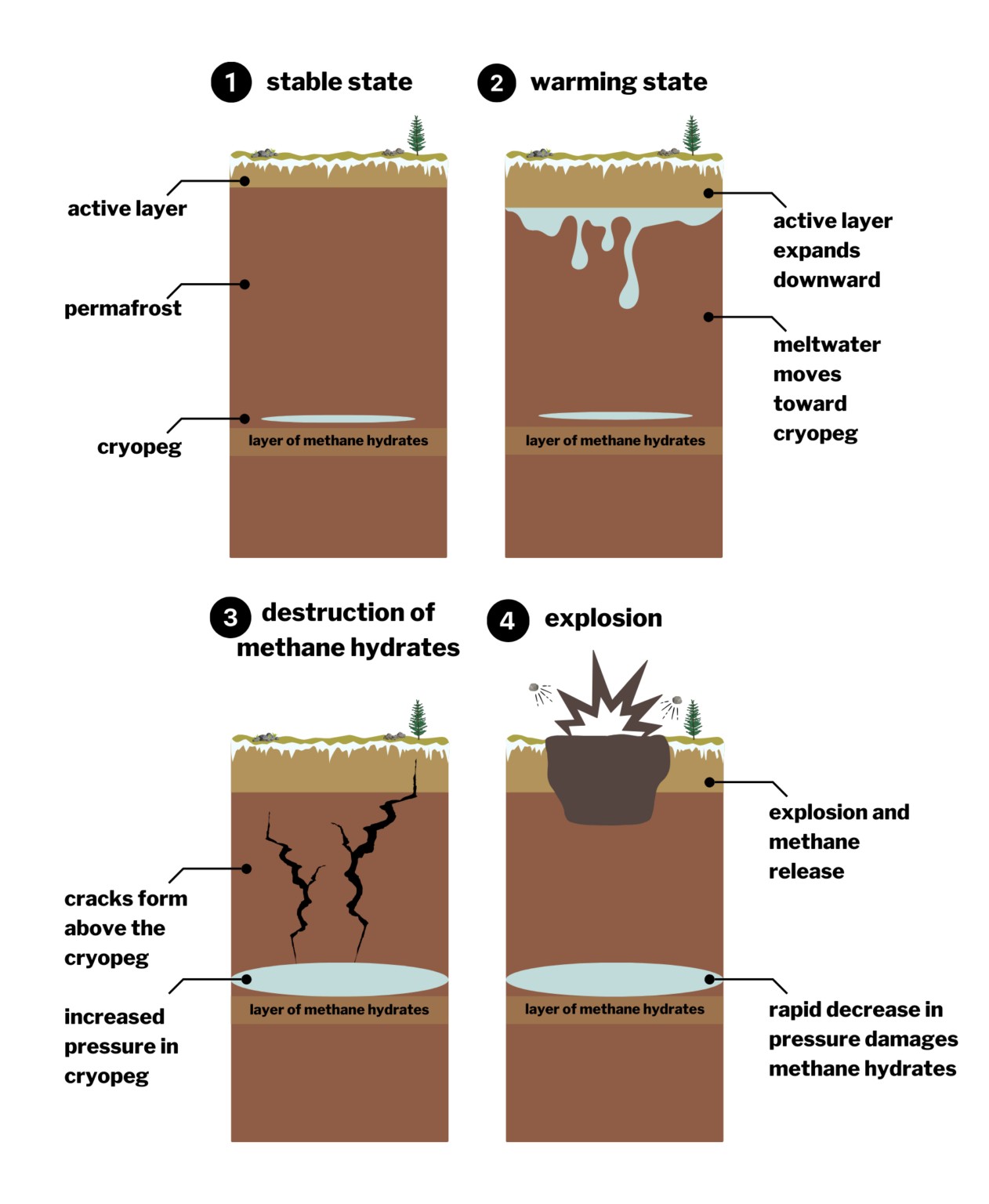Scientists believe they now know what has caused a series of mysterious craters to appear in Siberia over the last decade. It seems that, if conditions are right, a changing climate can have explosive implications.
In 2014, a strange crater appeared on the Yamal Peninsula in Siberia. The sudden appearance of the crater and the material surrounding it suggested it had been produced by some sort of explosion. Since then, scientists and locals have discovered several other craters that have appeared in the landscape.
These are not small potholes; the craters are pretty large. Some of them are up to 50 meters (165 feet) deep. During their investigations, researchers identified unusually high levels of methane around the craters, which suggested the greenhouse gas was being released by the gigantic holes. This led researchers to believe that large amounts of the gas trapped under the Siberian permafrost was escaping as climate change caused local temperatures to rise.
However, further investigation was needed to figure out exactly how these massive holes were forming. According to a new study, the permafrost melting hypothesis was not enough to explain the craters. Instead, the authors believe a series of specific conditions created by the region’s unusual geology and the effects of climate change kickstarted a process the led to methane being released with explosive results.
“There are very, very specific conditions that allow for this phenomenon to happen,” Ana Morgado, a chemical engineer at the University of Cambridge said in a statement. “We’re talking about a very niche geological space.”
The new explanation offered by Morgado and colleagues posits that surface warming leads to a rapid pressure change deep underground, which eventually causes the powerful release of methane gas. They researched this conclusion by assessing whether the process had been started by a physical or chemical reaction.
“There are only two ways you can get an explosion,” said Julyan Cartwright, a geophysicist at the Spanish National Research Council added. “Either a chemical reaction happens, and you have an explosion, like dynamite blowing up, or you pump up your bicycle tire until it blows up – that’s physics.”
In the case of the Siberian craters, there was no evidence of chemical reactions, which meant it had to be physical. But how?
The analogy offered by the researchers is one related to a pump and a bike tire. If you pump up the tire too much, it will eventually pop. So, it was just a case of figuring out what the pump was, in this instance. The answer was osmosis, the process by which a fluid moves to equalize the concentration of substances dissolved in them.

The processes of melt water leaking into the permafrost and contributing to explosive pressure that eventually erupts at the surface.
Image credit: AGU/Madeline Reinsel
The Yamal Peninsula has thick clay-like permafrost that usually functions as an osmotic barrier, but climate change has altered this.
The permafrost layer, which is 180 to 300 meters (591 to 984 feet) thick sits below a layer of topsoil known as the “active layer”. While the permafrost layer remains constantly frozen, the topsoil layer thaws and refreezes with the seasons.
Within the permafrost in some spots of the peninsula are special layers of unfrozen, high-salinity water called cryopegs. These layers remain in a liquid state due to the pressure and its salinity. And under these cryopegs is a layer of crystallized methane-water solids, known as methane hydrates, which should remain stable due to the low temperatures and high pressure.
However, now that average temperatures have risen, the active layer is melting and expanding downwards until it reaches the cryopeg layer due to osmotic pressure. Because there is not enough space in this layer to hold the extra meltwater, pressure starts to build up. This pressure causes cracks to appear that travel up to the surface, which result in a sudden drop in pressure at depth. That sudden pressure change damages the methane hydrate below the cryopegs, resulting in the release of methane gas and – like the bike tire becoming too full – a physical explosion.
The researchers conclude that the process leading up these explosions can take decades to occur, which fits with increasing climate warming since the 1980s.
“This might be a very infrequently occurring phenomenon,” Morgado said. “But the amount of methane that’s being released could have quite a big impact on global warming.”
The study is published in Geophysical Research Letters.
Source Link: Decade-Long Mystery Behind Siberia's Massive Explosive Craters Finally Revealed